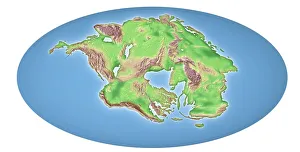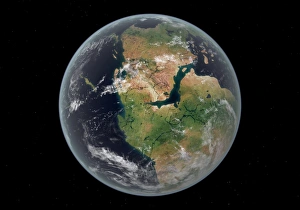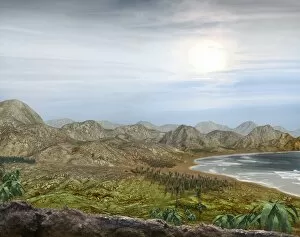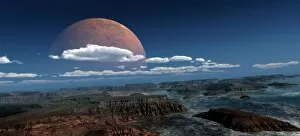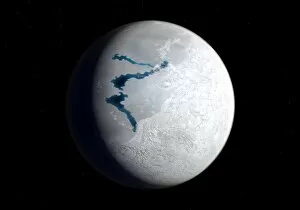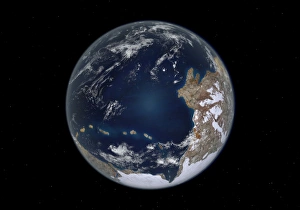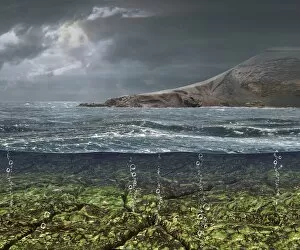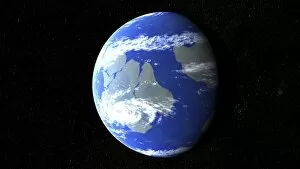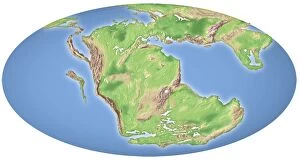Supercontinent Collection
"Supercontinent: Unveiling the Earth's Ancient Puzzle" Travel back in time, 250 million years ago, when the phenomenon of continental drift was at its peak
All Professionally Made to Order for Quick Shipping
"Supercontinent: Unveiling the Earth's Ancient Puzzle" Travel back in time, 250 million years ago, when the phenomenon of continental drift was at its peak. The Earth existed as a single massive landmass known as Pangea, where all continents were interconnected like an intricate jigsaw puzzle. This extraordinary era witnessed a unique planetary configuration that shaped our world. Imagine standing on this ancient supercontinent during the Early Jurassic period and gazing towards the western hemisphere. As a moon rises over this young world, you can't help but marvel at its breathtaking beauty and vastness. But let's rewind even further to 650 million years ago during the Marinoan glaciation. The planet was gripped by Snowball Earth, with ice covering almost every corner, and is an awe-inspiring sight to behold - a frozen wonderland stretching far beyond what meets the eye. Before Pangea came into existence, there was Rodinia - another supercontinent that dominated our planet around one billion years ago. Eduard Suess, an Austrian geologist born in London during the 19th century, proposed this concept of ancient landmasses shaping Earth's history. Artworks depicting prehistoric landscapes such as Kenorland and Rodinia allow us to visualize these incredible worlds that once thrived on our planet. They offer glimpses into forgotten times when life took different forms and ecosystems flourished across vast terrains. Fast forward to 600 million years ago following the Cryogenian period; Planet Earth emerges from its icy slumber after enduring extreme climatic conditions for millions of years. Life begins to reemerge slowly but surely amidst changing environments and evolving geological formations. The concept of supercontinents has fascinated scientists throughout history due to their profound impact on shaping our planet's geography and biodiversity. These colossal landmasses have left behind imprints etched deep within rocks and fossils – remnants of past epochs waiting patiently to be discovered.

